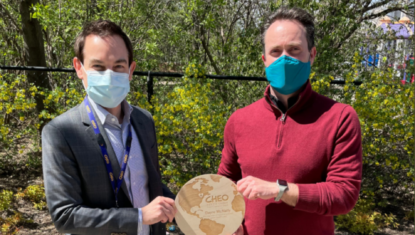Born on Prince Edward Island and raised by two great parents (Jim and Paulette). Along with his two wonderful sisters (Donnay and Kathie) he spent his first two decades participating in community and school interested in team sport (hockey, baseball, rugby) and learning (music, science). He attended UPEI majoring in Chemistry, where he received his first research experience working to improve animal nutrition. Following completion of his BSc he moved to Ottawa to complete a PhD in Biochemistry at Carleton University focused on hibernation and free tolerance. Following his PhD he moved to Halifax for medical school where he had his first exposure to clinical research, publishing multiple epidemiological papers. During his pediatric residency training in Saskatoon at the University of Saskatchewan he was encouraged to study vitamin D, investigating its role in unexplained pediatric arthralgia and acute lower respiratory tract infections.
He continued this work during his subspecialty training in pediatric critical care at the University of Ottawa, including a multicentre study identifying high rates of vitamin D deficiency in PICU and association with worse clinical outcome. As staff he has performed two Health Canada regulated pilot studies identifying regimens capable of preventing and rapid normalizing vitamin D deficiency in critically ill children and is presently leading a multicentre CIHR funded RCT to determine whether rapid correction of vitamin D deficiency improves outcomes in critical illness. In addition to work on vitamin D he has active research programs exploring novel methodologies to improve the efficiency of systematic review completion and is one of the co-founders of the Canadian Science Fair Journal. When not at work he, his wife (Loren) and two children (Owen and Connor) can be found doing science experiments and playing sports.
Related News
Research Projects
-
Decontamination Interventions for the Reuse of Surgical Mask Personal Protective Equipment: A Systematic Review
10/08/2020
There is limited evidence on the safety or efficacy of surgical mask decontamination. Given the heterogeneous methods used in studies to date, we are unable to draw conclusions on the most efficacious and safe intervention for decontaminating surgical masks.
-
Decontaminating N95 and SN95 masks with Ultraviolet Germicidal Irradiation (UVGI) does not impair mask efficacy and safety: A Systematic Review
17/07/2020
In conclusion, the function of N95 masks, based on aerosol penetration and airflow filtration, is maintained following a single cycle of UVGI. Decontamination using UV light in the laboratory setting suggests that this can be a successful method of removing infectious pathogens from FFRs. Future studies should use a cumulative UV-C dose of 40,000 J/m2 and focus on validating the effectiveness of UVGI decontamination in the real-world setting, and on determining the impact of UVGI on mask fit as well as the maximum number of UVGI cycles that can be safely applied to an N95 FFR.
-
Decontaminating N95 and SN95 masks with ultraviolet germicidal irradiation does not impair mask efficacy and safety.
13/07/2020
To help inform FFR-reuse policies and procedures, our team has conducted three systematic reviews to synthesize existing published data regarding the effectiveness of UVGI, heat, microwave irradiation, and chemical disinfectants for N95 FFR decontamination.
-
Efficacy and Safety of Disinfectants for Decontamination of N95 and SN95 Filtering Facepiece Respirators: A Systematic Review
18/04/2020
Aim:The objective of this review was to synthesize existing data on the effectiveness and safety of using disinfectants to decontaminate N95 FFR.
-
Decontaminating N95 masks with Ultraviolet Germicidal Irradiation (UVGI) does not impair mask efficacy and safety: A Systematic Review
10/04/2020
Microwave irradiation and heat provides safe and effective decontamination options for N95 FFR reuse during critical shortages. However, autoclaving masks is not recommended by the evidence in this review. Any mask disinfected using these methods should be inspected for physical degradation before reuse.




